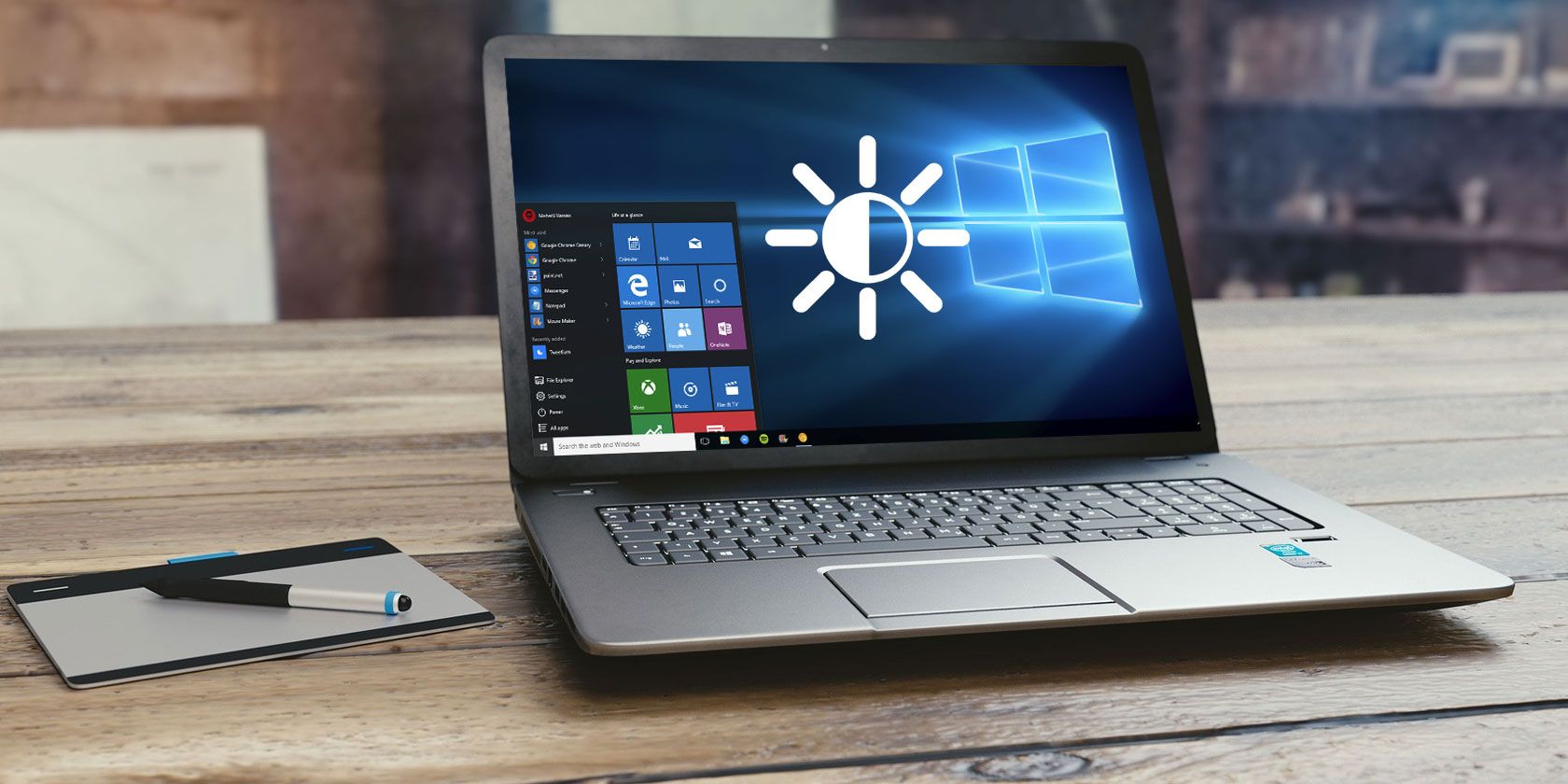
The brightness of your computer monitor might not be something you consider. But it’s very important for the health of your eyes. We’re going to show you how to adjust the screen brightness on Windows 10 with the available controls.
Adjusting the display settings on a new computer is a basic task. If you get eye strain or headaches, the display brightness could be the culprit. It’s easy to adjust the levels manually or automatically based on battery life, power plan, or surrounding light.
1. Manually Change Brightness in Windows 10
Press Windows key + I to open Settings and go to System > Display. Beneath Brightness and color, use the Change brightness slider. To the left will be dimmer, to the right brighter.

If the slider is unavailable, it’s one of two things. If you’re using an external monitor then use the buttons on that to change the brightness. Otherwise, you need to update the display driver.
To do this, press Windows key + X and click Device Manager. Expand Display adapters and then right click your graphics card. Click Update driver and follow the wizard.
Use the Windows Mobility Center

You can also manually adjust your brightness using the Windows Mobility Center. To access this, press Windows key + X and click Mobility Center.
Here you can use the Display brightness slider to adjust the screen’s brightness.
2. Automatically Adjust Brightness for Battery Life
Lowering your brightness can help get more juice from your portable device’s battery. Windows 10 has a battery saver feature that can automatically lower your brightness when enabled.
To enable this, press Windows key + I to open Settings and go to System > Battery and scroll down to Battery saver settings.

Tick Turn battery saver on automatically if my battery falls below and use the slider to adjust what percentage battery level you want the feature to enable itself at.
Finally, tick Lower screen brightness while in battery saver. It’s not possible to set what brightness level is used, but hopefully, Microsoft will add that in a future Windows 10 update.
3. Automatically Change Brightness for Power Plan
You can have different brightness depending on whether your computer is charging or running off the battery. To conserve battery, set a dimmer brightness level when it’s not plugged in.
To do this, press Windows key + R to open Run, input control panel, and click OK. Go to Hardware and Sound > Power Options and click Change plan settings next to your selected plan.

Use the Adjust plan brightness slider to set your On battery and Plugged in levels. Once done, click Save changes.
If you want some more power saving advice, see our guide for how to optimize Windows 10’s battery.
4. Use Adaptive Brightness in Windows 10
Ideally, your monitor brightness should match the light around you. One way to help with this is to have the brightness automatically change based on your ambient light.
This feature is only enabled if your device has a brightness sensor. To enable it, press Windows key + I to open Settings and go to System > Display. If you can see Change brightness automatically when lighting changes, switch it to On. If you can’t see this, you don’t have the sensor.
An even better way to adjust this is through the Control Panel because you can set it dependent on your power plan. Press Windows key + R, input control panel and click OK.

Once in the Control Panel, go to Hardware and Sound > Power Options > Change plan settings > Change advanced power settings.
Expand Display > Enable adaptive brightness and use the dropdowns to set it for On battery and Plugged in.
5. Adjust Brightness On PC Using the Keyboard
Your computer keyboard might have shortcuts to turn your brightness up and down. If you’re using a laptop, it almost certainly will. Check out the function keys—brightness is commonly represented by a sun icon.

The exact key combination will depend on your keyboard model. You may need to hold down or activate the Fn key and then press the corresponding function key at the same time.
On my Huawei Matebook laptop, pictured above, I actually keep the Fn key disabled and press F1 to lower brightness and F2 to increase brightness (enabling my Fn key would activate the F1/F2 function instead.)
6. Brightness Adjustment Shortcuts in Windows 10
Here are two quick shortcuts for adjusting the brightness settings:
1. You can quickly adjust brightness through the Action Center icon in the taskbar (or press Windows key + A.) Use the brightness slider to adjust the level. The further right the slider, the brighter the screen.
If you don’t see the icon, press Windows key + I, go to System > Notifications & actions > Edit your quick actions and click Add > Brightness > Done.

2. Want a good third-party utility? Check out the Windows 10 Brightness Slider. This lightweight utility will add a brightness icon in your system tray, which you can then click to adjust your brightness on a slider, much like how the volume icon works.
Head over to the GitHub project, download the file, and open it. It’ll automatically go into your tray. If you want it to always be there, right-click the icon and click Run At Startup.
Optimize Your Display for Eye Health and Comfort
Hopefully, you’ve learned something new here about how to control your brightness settings on Windows 10.
With brightness sorted, you may want to check out your monitor’s color temperature. The light from our screens apparently causes sleep problems and so you can use programs like f.lux or Windows 10’s Night Light feature to help combat it.
Read the full article: 6 Ways to Adjust Screen Brightness on Your Windows 10 PC
Read Full Article
No comments:
Post a Comment